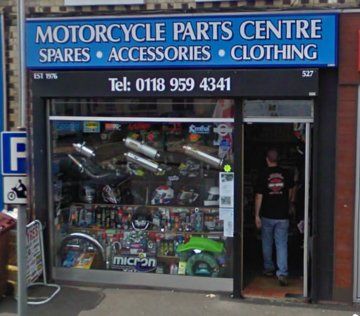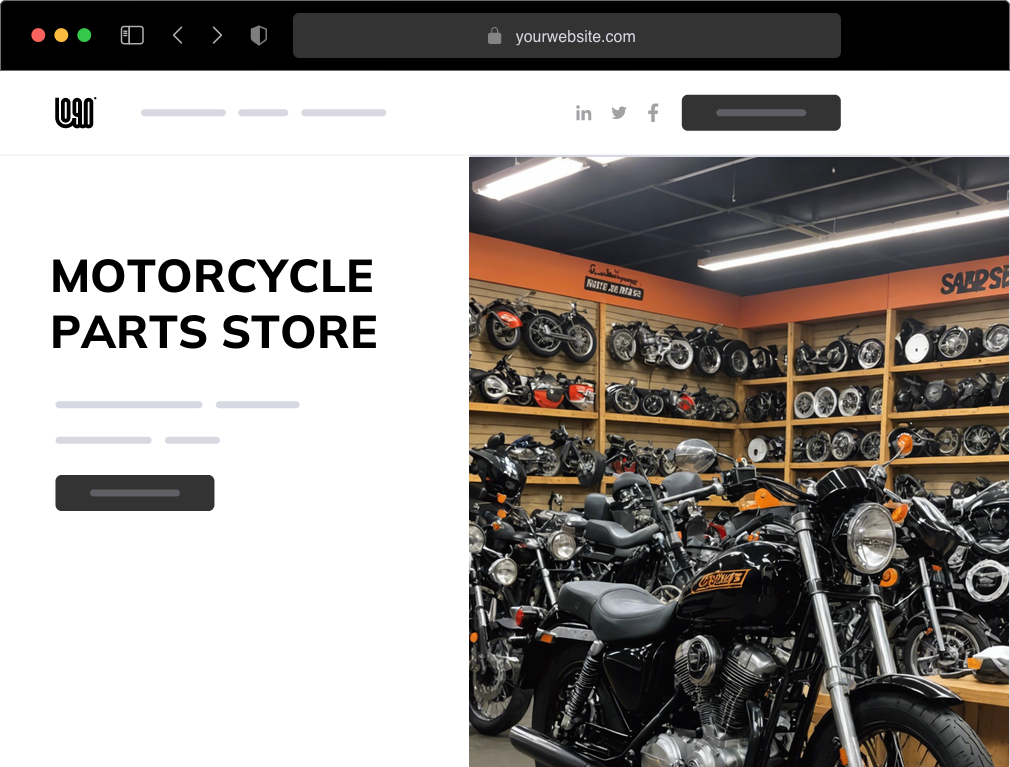Discover High Quality Moto Parts NZ for All Your Motorcycle Needs
Wiki Article
Recognizing the Necessary Components of a Motorbike: A Comprehensive Guide for Fanatics
For motorcycle enthusiasts looking to boost their riding experience and ensure their bikes run smoothly, recognizing the important components of a motorcycle is vital. Each component, from the engine's complex operations to the essential duty of the stopping mechanisms, not only impacts performance however also safety and convenience.Engine Parts

The camshaft plays an essential function in controlling the timing of the engine's shutoffs, making sure the specific opening and closing needed for efficient gas and air intake, along with exhaust expulsion. This timing is vital to keeping optimal engine performance and performance. Furthermore, the carburetor or gas shot system, depending upon the motorbike design, is liable for blending air with gas in the appropriate ratio for combustion.
The cooling system, either air or liquid-based, functions to preserve the engine's temperature level within operational limitations, protecting against getting too hot and making certain durability - motox parts nz. Each component, thoroughly made and integrated, adds to the seamless operation of the engine, specifying the bike's power result and overall efficiency
Transmission System
Indispensable to the motorbike's functionality, the transmission system makes sure effective power transfer from the engine to the wheels. This system comprises several critical components, consisting of the clutch, gearbox, and final drive, each playing a vital duty in equating the engine's power into motion. The clutch, typically run by a hand lever, serves to disengage the engine and involve from the transmission, enabling smooth gear adjustments and controlled acceleration.The transmission, often described as the transmission appropriate, has a collection of equipments that bikers can manually shift with to readjust the bike's speed and torque output. These equipments are prepared in a sequence that makes it possible for the bike to increase efficiently and preserve optimal engine efficiency across various rates. Most motorcycles make use of a consecutive transmission, calling for the motorcyclist to move gears in an established order.
Braking Devices
While understanding the transmission system is key to using a bike's power, just as crucial is the capability to regulate and stop that power efficiently, which is where braking systems come right into play. Brakes are crucial for safety and security and performance, providing the biker with the essential control to browse various surfaces and conditions. Commonly, motorcycles feature 2 kinds of braking systems: disc brakes and drum brakes.Disc brakes are a lot more prevalent in contemporary motorcycles because of their superior efficiency. They include a brake disc, caliper, and pads. When activated, the caliper presses the brake pads versus the spinning disc, transforming kinetic power right into warm, thereby reducing the wheel. This system offers better warm dissipation, consistent efficiency, and boosted stopping power, specifically in wet conditions.
Alternatively, drum brakes, though much less usual, are still located in some bikes. They function by pressing brake shoes against the inner surface area of a drum connected to the wheel. While generally less effective in warmth dissipation and quiting power, drum brakes are easier and more cost-efficient.
Recognizing these braking systems' nuances enables riders to preserve their motorcycles appropriately and appreciate the design that makes certain secure and reliable quiting.
Suspension and Guiding
Suspension and steering systems are essential parts that dramatically affect a motorbike's handling and ride comfort. The suspension system, including forks at the front and shock absorbers at the rear, soaks up roadway irregularities, enhancing stability and control. Front forks, inverted or usually telescopic, compress and rebound to mitigate influences, while rear shock absorbers preserve tire call with the roadway, vital for traction and safety.Steering, focused around the handlebars, links the rider to the motorcycle's directional control. The guiding head bearings make certain smooth operation, allowing specific maneuverability. Proper alignment and upkeep of these bearings are essential for foreseeable guiding action and reducing rider fatigue.
The suspension's adjustability is one more essential aspect; preload, damping, and rebound settings allow personalization to match various riding designs and conditions. This versatility is vital for enhancing efficiency, whether browsing urban roads or dealing with sturdy tracks. Advancements like electronic shock absorber supply real-time adjustments, enhancing adventure high quality throughout diverse surfaces.

Electrical Equipments
After guaranteeing a controlled and smooth adventure with effective suspension and steering systems, interest transforms to the electrical systems, an essential element of contemporary motorcycles. These systems play an essential duty not just in starting the engine yet additionally in powering numerous parts that enhance the performance and safety and security of the bike.At the heart of a motorcycle's electric system is the battery, which stores electrical power needed for beginning the engine and powering complementary systems - motorbike shop. The alternator or generator, coupled with the rectifier-regulator, guarantees the battery continues to be charged while the bike functions, converting mechanical energy into electric energy and maintaining voltage levels
The ignition system, one more vital part, is accountable for igniting the air-fuel mix in the engine's cyndrical tubes. Modern motorcycles frequently utilize a digital ignition system, providing greater performance and reliability contrasted to conventional systems.
Lights systems, including fronts lights, tail lights, and indicators, are likewise important, making certain visibility and safety and security for the rider. Extra electronic elements such as sensing units, control devices, and presents add to advanced attributes like gas shot administration, anti-lock braking systems (ABDOMINAL), and electronic dashboards, better boosting the riding experience.
Final Thought
A detailed comprehension of a motorcycle's necessary elements, consisting of the engine, transmission system, stopping mechanisms, suspension, steering, and electrical systems, is crucial for lovers aiming to enhance comfort, efficiency, and safety. Mastery of these aspects enables informed choices pertaining to maintenance and upgrades, eventually boosting the riding experience. By integrating this expertise, bikers can ensure their motorcycles run at peak efficiency and integrity, thus maximizing both satisfaction and durability of their vehicles.For motorcycle fanatics looking to elevate their riding experience and ensure their bikes run smoothly, comprehending the crucial components of a motorbike is critical.Integral to the motorbike's performance, the transmission system ensures efficient power transfer from the engine to the wheels.While recognizing the transmission system is key to utilizing a motorbike's power, equally vital is the capacity to regulate and stop that power successfully, which is where braking devices come moto parts nz into play. Commonly, motorcycles include two types of braking systems: disc brakes and drum brakes.
A comprehensive comprehension of a bike's vital components, consisting of the engine, transmission system, stopping systems, suspension, steering, and electric systems, is crucial for enthusiasts intending to maximize safety and security, performance, and comfort.
Report this wiki page